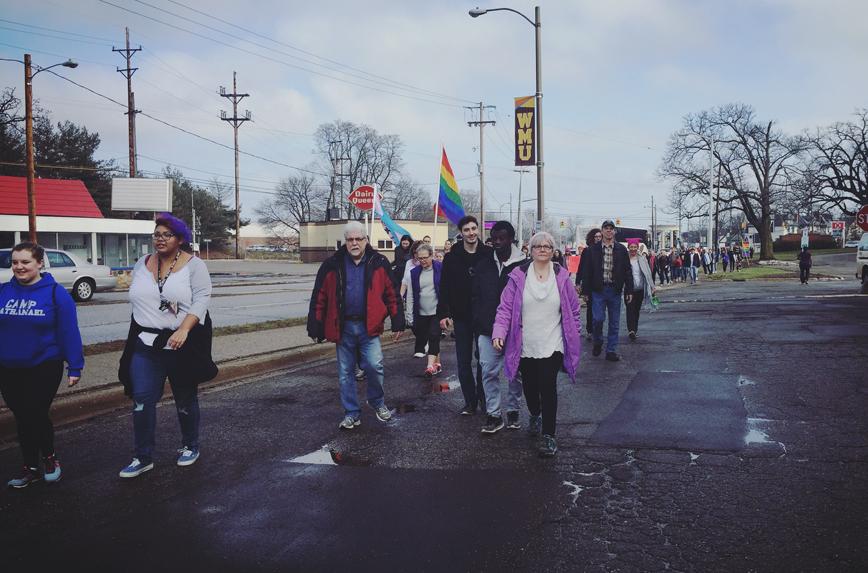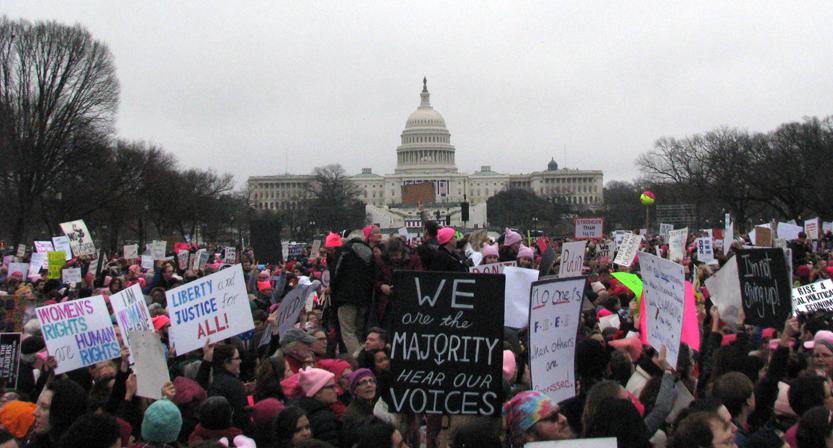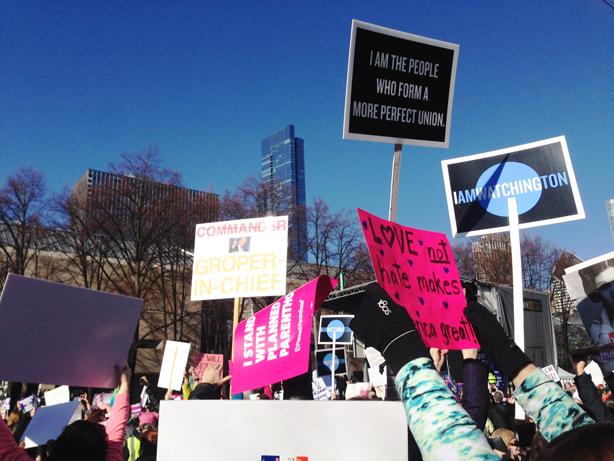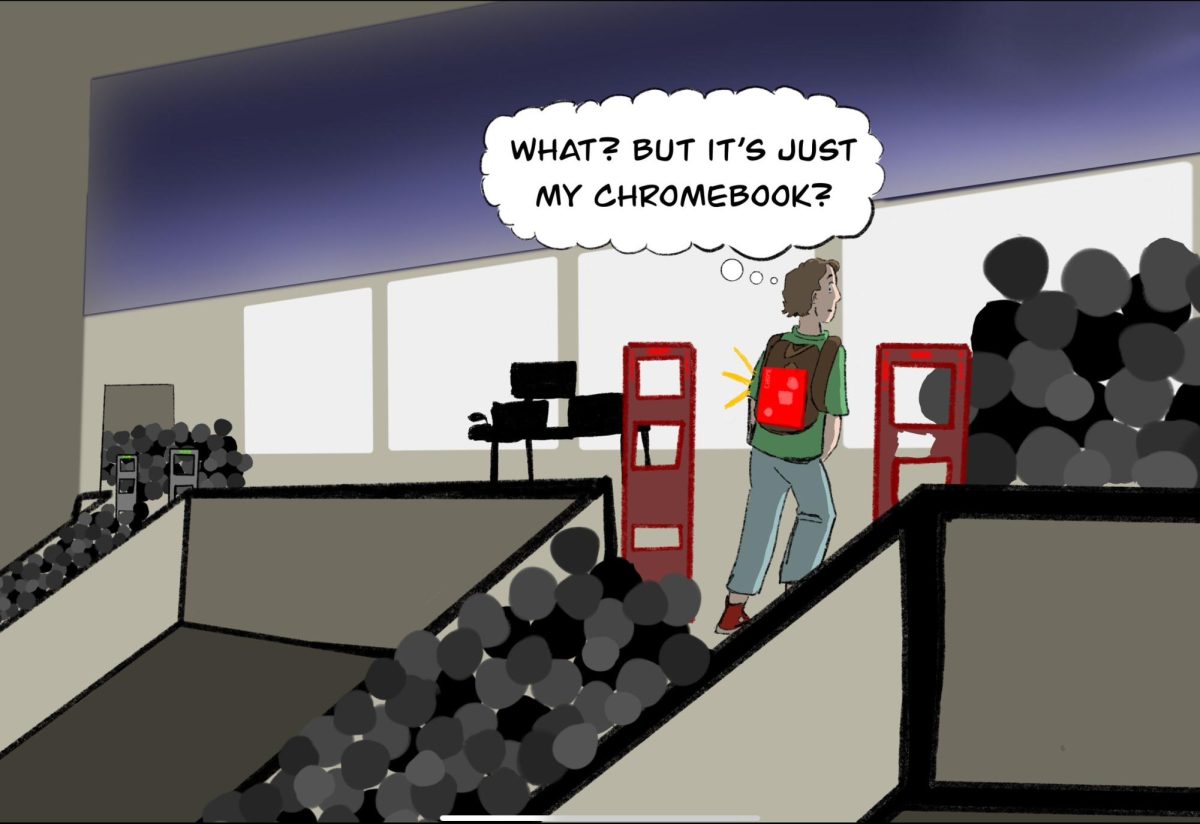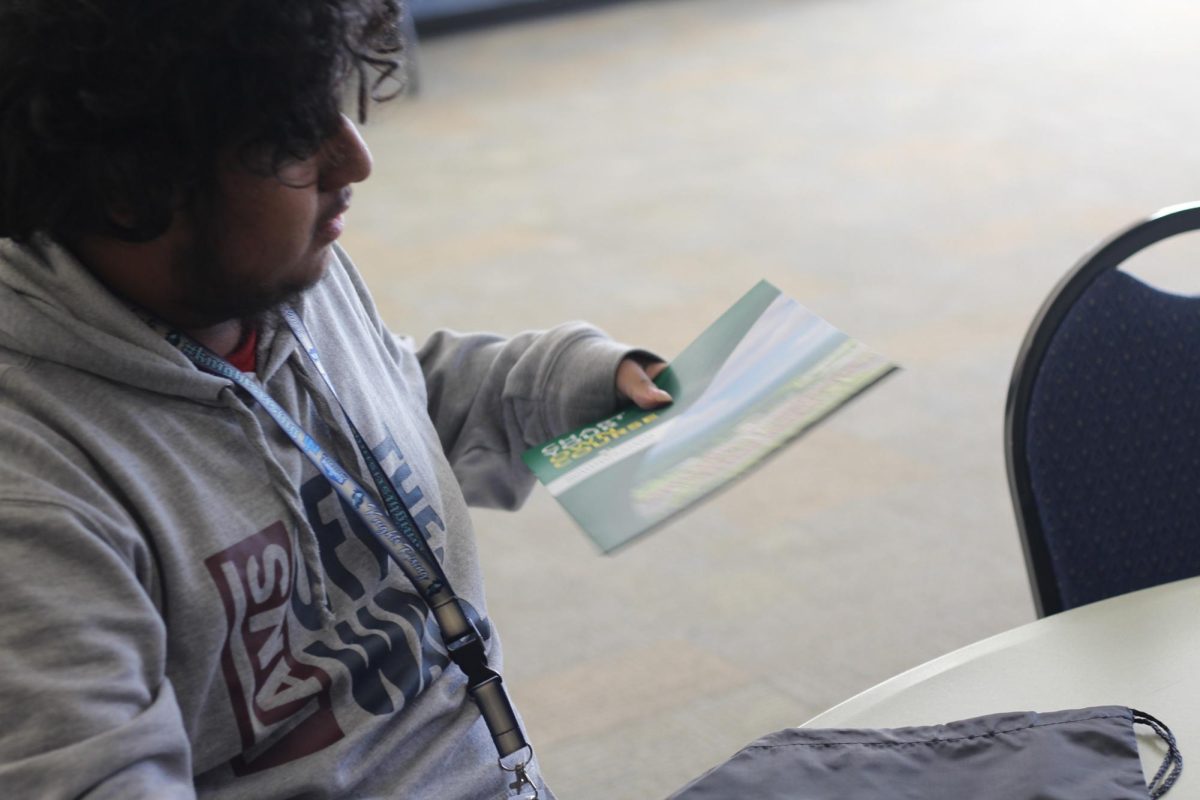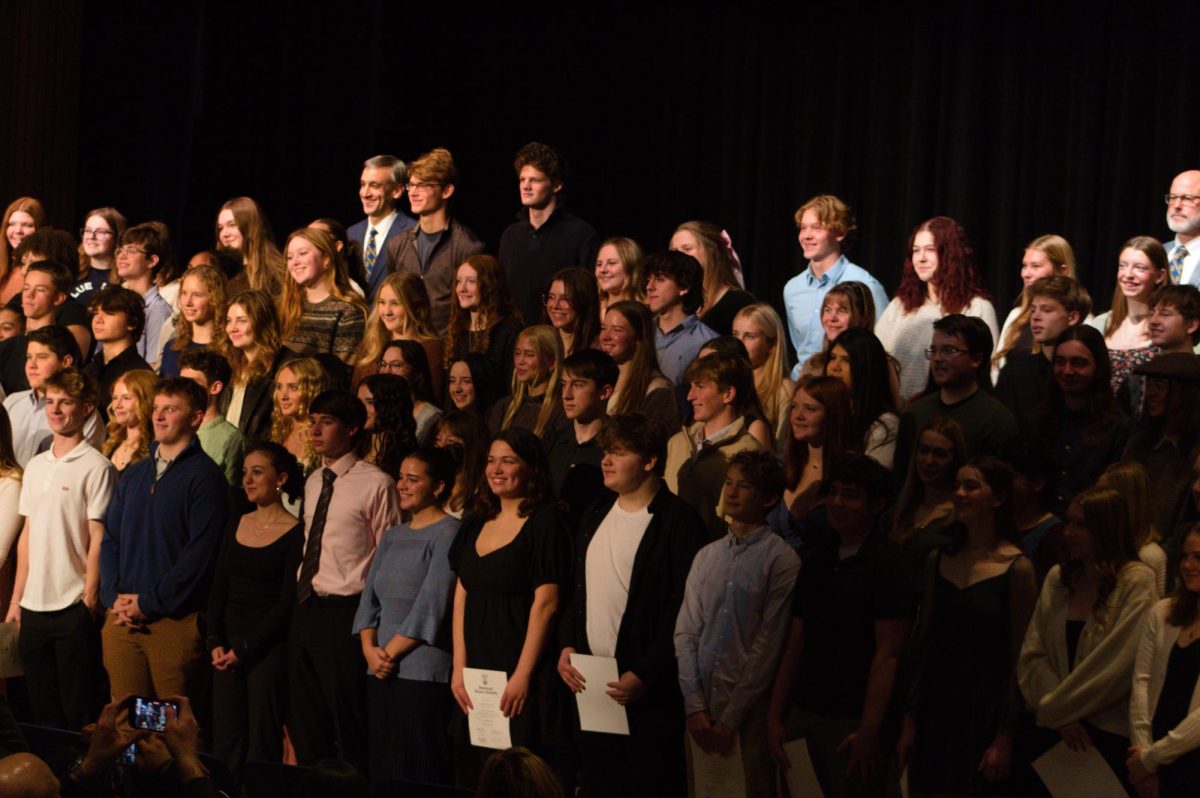It started small—a retired attorney floated an idea on her personal facebook page: what if a group of women got together and marched in Washington around Inauguration Day? Her friends helped her create an event page, and that night, 40 women had responded that they’d join her. When she woke up, that number had increased—to 10,000. Soon, it was a full blown-phenomenon and was picked up by national organizers and activists. Headed by civil rights advocate Tamika D. Mallory, Executive Director of The Gathering for Justice Carmen Perez, Palestinian-American-Muslim activist Linda Sarsour and CEO of Manufacture New York Bob Bland. The small expression of frustration from a woman in Hawaii became a movement: The Women’s March on Washington.
Organizers expected (and secured a permit for) 200,000 people to gather and march through Washington, DC, on January 21st, 2017. 500,000 or more showed up for the actual event (which didn’t involve a single arrest). DC was not the only city that got in on the action—marches took place worldwide to advance a platform of gender and racial equity, and remind the 45th President of the United States of the power of the people. Over 2 million people worldwide participated in 673 “sister marches,” in cities such as Chicago, L.A, New York, Boston, Paris, London, Rome, and yes, Kalamazoo (where over 1,000 people attended).
These photos offer a glimpse of the events at three women’s marches: DC, Chicago and Kalamazoo.
WASHINGTON D.C. covered by Nora Hilgart-Griff
I started my morning at 6:30 a.m, and left my grandma’s house in Silver Spring, MD, at 7:00 with all the members of my protest party: me, my grandmother, my mom, my sister, my cousin and two family friends. We drove to the Glenmont DC Metro station, and it was beyond packed, a sea of people; full escalators descending into a wide underground atrium packed almost shoulder-to-shoulder. Pink hats abounded, as well as a variety of cheeky, hopeful, angry, clever and inspiring signs. Many people were in line to purchase SmarTrip passes, and we needed one more than we’d pre-purchased, so I took a moment to chat with those around me and snap some photos. People from every state were represented; a group of friends who’d driven from California, a woman and her daughter who’d driven up from Kentucky and an old man from Indiana who felt a personal distaste for the new vice-president.
The train was sardine-packed; there was hardly room for anyone else, and yet we were only the beginning of the line. Stop to stop, we were met with crowded stations out the window, men & women slack-jawed at how already bursting our train was. Still, two or three squeezed on at every stop before we tumbled out at Union Station and Judiciary Square, several blocks from the protest, where the crowd was already huge. Protesters poured through the streets in attempt to reach Independence, where the speakers were located, across the National Mall. It quickly became apparent, however, that this wasn’t possible due to the sheer vastness of the crowd. I asked a man with a sign that read “If not us, who? If not now, when?” to help me onto a chest-level lattice of metal bars. He kept a hand on my hip to help me balance while I took a photo from a better vantage point.
It was a striking sight. More people than I’d ever seen in my life, spreading on and onward with the capitol building in the background, almost disappearing into the foggy grey sky, looking like whatever it contained could be no match for the fire of the thousands of people on its doorstep.
We tried to get as close as we could to the march route before 1:15, the time the actual walking was set to start, wending our way down the National Mall toward the Washington Monument. We didn’t know it then, but the organizers had all but given up trying to corral the half-a-million attendees (300,000 more than they’d expected). When 1:15 hit, groups across the area started marching–onto whatever street was nearest them, disregarding any predetermined route. Occasionally, one march would find itself perpendicular to another, and, like two streams becoming a river, combine. We passed the Department of Agriculture, the Washington Monument, the National Museum of African American History & Culture, and on to the Ellipse, and the White House.
My group switched streets and found ourselves on Pennsylvania Avenue, passing the Trump International Hotel. A group of protesters had stopped marching and settled there. Chants had risen through the air all day–this is what democracy looks like! The people united will never be divided! Black lives matter! Our body, our choice! You’re racist, you’re gross, you lost the popular vote! and more. But it was there on Pennsylvania Avenue, in front of the Trump Hotel, that I heard the call that moved me most: we will never go away! Welcome to your first day!
The next day and the next, people were shouting the same in front of the White House, but this time: welcome to your second day! Your third day! Your fourth day!
I don’t know if this march will translate into real, substantive political activism and change. I hope it does. What I do know is that even as the day ended, the passion lived on. In the DC Metro’s Union Station, joyful crowds in pink hats cheered every train that arrived and every train that left, even if there wasn’t room for them on it. On the drive home, every rest stop was teeming with women still wearing their feminist shirts, their Maya Angelou pins, their pride. Car after car we passed was painted with WOMEN’S MARCH BOUND, THE FUTURE IS FEMALE, LET’S GO DC, or displayed the signs they’d brought in their back windows. Stuck in the enormous traffic at a Pennsylvania toll, women leaned out of their windows and sunroofs, waved their signs, shouted to each other, a chorus of honks and cheers that lasted twenty minutes.
There’s no way to say how or when the movement that began on January 21st across Washington DC will end. But I can relate, with certainty, that it had a remarkably auspicious beginning.
CHICAGO
covered by Grace Marshall
On Friday the 20th, my family and I left for Chicago to stay with some close family friends. The next morning I woke up around 7. I had been very sick, and not just at the prospect of our new world leader, so this was not exactly desirable but we had a march to go to.
We walked a little ways from the parking lot to get to the march. As we neared the stage, we passed groups of people in pink hats, carrying signs. Suddenly we turned a corner, and there, stretching back as far as I could see, were people. People of all genders, sexes, races, ages and walks of life. I saw little old ladies with signs as tall as them, pregnant women sitting in chairs and people with all sorts of disabilities there to march.
As we walked into the crowd, a band on stage was finishing the last few bars of an upbeat, jazzy song. When the song ended, a woman stepped to the front of the stage and said, “we’ve got one more for you! If you know it, sing along!” The band started playing and the music was slower now,more soulful. I knew the tune but couldn’t place it. The woman began singing in a strong voice.
“Oh when Chicago,
Comes marching in
Oh when Chicago comes marching in
Oh how I long to be in that number
When Chicago comes marching in”
A man on stage had started playing a trombone and people slowly started to join the song. Everyone was singing all around me and for a moment I started to tear up. It was so clear in that moment that we were all a part of something bigger than just a march or protest against a president.
The ideals that the United States, and the world, stand for–justice, equality, even love– are so much bigger than one man will ever represent or be able to take away. That’s what we were singing for.
We stayed at the march for several hours more, long enough to be there when they announced that 250,000 people had come to march and flooded the route–making it so that we couldn’t actually march. Consequently, I have since taken to calling it in my mind, “the march without marching.”
KALAMAZOO
